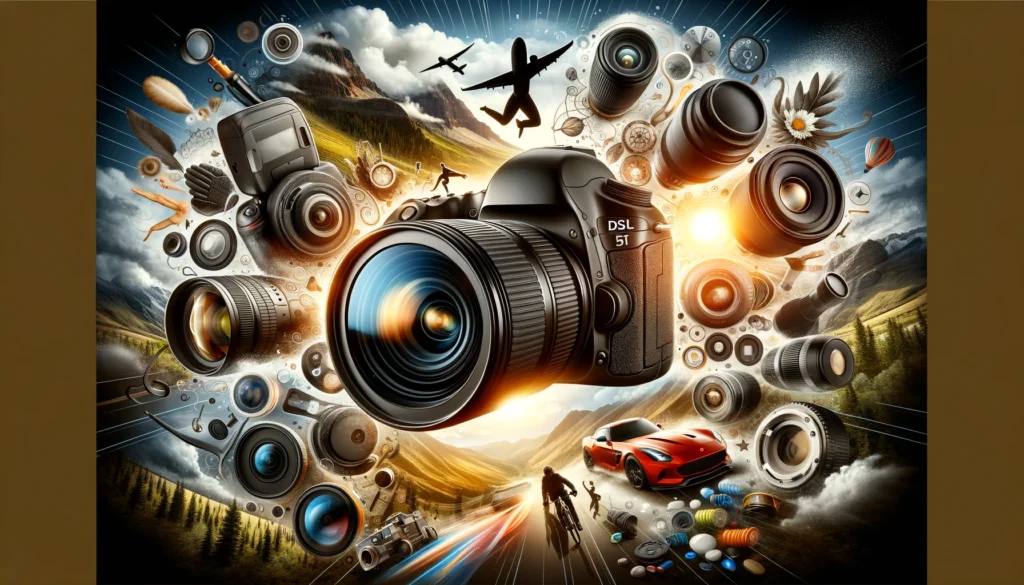Table of Contents
Welcome to an extensive exploration of DSLR photography terms, spanning from “R” to “Z”. This blog post is meticulously crafted for DSLR photography enthusiasts of all levels, aiming to demystify the jargon and technical terms that form the backbone of digital DSLR photography. Whether you’re a beginner looking to understand the basics or an experienced photographer brushing up on details, this guide is your comprehensive companion.
Understanding DSLR Photography – R to Z
RAW File Format – The Foundation of Post-Processing
What It Is – RAW files are unprocessed data from your camera’s sensor. Unlike JPEGs, RAW files provide you with a greater level of detail and flexibility in post-processing, allowing for extensive adjustments without loss of quality.
Resolution – The Detail Within
Defining Quality – Resolution refers to the number of pixels in an image, determining its detail and clarity. Higher-resolution images offer more detail, essential for large prints or detailed editing.
Sensors – The Heart of Your DSLR
Capturing Light – The sensor is where the magic begins in a DSLR, converting light into electronic signals. Sensor sizes, including APS-C, APS-H, and Full Frame, affect image quality, depth of field, and low-light performance.
Sharpness – The Clarity of Your Images
Achieving Focus – Sharpness is defined by the clear, distinct outlines within an image. Techniques to enhance sharpness include using a tripod, optimizing aperture settings, and careful focusing.
Shutter Speed – Mastering Motion
Freezing or Blurring – Shutter speed controls how long the camera’s sensor is exposed to light. Fast shutter speeds freeze action, while slow shutter speeds create motion blur, offering creative possibilities in your DSLR photography.
Shutter Speed Priority (Tv Mode) – Creative Control Over Motion
Setting Priorities – In Tv mode, you select the shutter speed, and the camera automatically adjusts the aperture. This mode is ideal for capturing dynamic scenes, from sports to flowing water.
Spot Metering – Precision Exposure
Focused Measurement – Spot metering measures light from a small, specific area of the scene. It’s invaluable for high-contrast scenes or when precise exposure for the subject is crucial.
Subject – The Center of Attention
What You Capture – In DSLR photography, the subject is the primary focus of your image. Understanding how to emphasize your subject using composition and lighting is key to impactful photographs.
Subject Blur – Capturing Movement
Conveying Motion – Subject blur results from movement during slow shutter speeds. It can be used creatively to imply motion or accidentally if the camera isn’t stabilized.
Telephoto and Super Telephoto Lenses – Bringing the Distance Closer
Focal Lengths for Detail – Telephoto lenses, with their long focal lengths, are perfect for isolating subjects from the background, ideal for wildlife and sports DSLR photography where distance is a factor.
Expanding Your Horizons – U to Z
Underexposure – The Art of Darkness
Low Light, High Impact – Underexposure occurs when an image doesn’t receive enough light, resulting in a darker output. While often a mistake, it can be used creatively to enhance mood and atmosphere.
Optical Viewfinder – Through the Lens
A Direct View – The optical viewfinder allows you to compose images using a direct optical path from the lens, offering a clear, lag-free view of your subject.
White Balance – Color Accuracy
True Colors – White balance adjusts the camera’s color sensitivity to match the lighting conditions, ensuring that whites are true to life and colors are accurate.
Wide Angle Lens – Broadening Your View
The Wider Perspective – Wide angle lenses, with their short focal lengths, are ideal for capturing expansive landscapes, large groups, or tight interior spaces.
Zoom Lens – Versatility in Focal Length
Flexibility at Your Fingertips – Zoom lenses offer a range of focal lengths within a single lens, allowing you to adjust your composition and perspective without changing your position.
FAQ’s
When should I use RAW format?
Use RAW when you want maximum control over your image in post-processing, particularly in challenging lighting conditions or when image quality is paramount.
How do I choose between a telephoto and a wide-angle lens?
Select a telephoto lens for isolating distant subjects or achieving a shallow depth of field. Opt for a wide-angle lens to capture expansive scenes or work in confined spaces.
What’s the best way to manage white balance in mixed lighting?
In mixed lighting, manually adjusting your camera’s white balance based on the dominant light source or shooting in RAW for post-processing flexibility is advisable.
Conclusion
Navigating the DSLR alphabet from “R” to “Z” enriches your photographic knowledge, equipping you with the understanding needed to make informed decisions about your equipment and settings. From the intricacies of RAW processing to the creative potential of zoom lenses, mastering these concepts empowers you to elevate your photography, capturing images that resonate and inspire. Embrace the journey of learning, experiment with new techniques, and continue to explore the boundless possibilities of DSLR photography.
